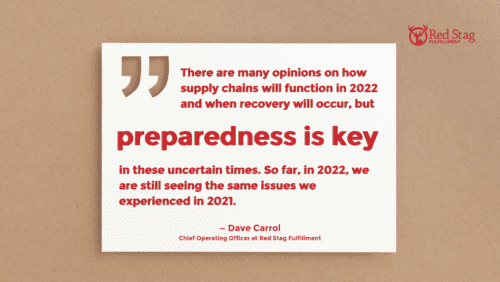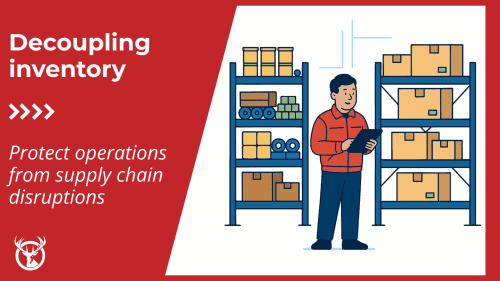The question of how much warehouse storage space an eCommerce company needs is never a simple one to answer. It’s easy to want more space at the first sign of sales spikes or supply chain uncertainty, but savvy business owners know that day-to-day sales fluctuations are normal — and true growth takes planning and patience. Warehouse storage needs depend not only on today’s operations but also on what you hope to achieve tomorrow.
Whether you’re looking at shelves that are empty and having to fill backordered products or watching your 3PL or warehouse burst at the seams with excess safety stock, analyzing your historic sales data and optimizing inventory has never been more important – nor has knowing exactly how much warehouse space you really need.
So how much space is right for your eCommerce business? Here’s what you need to consider to calculate it:
- The inventory warehouses need to hold during peak season
- Average warehouse space you’ve used YoY, including room for people, equipment, and offices
- Impacts of supply chain backlogs and keeping too much extra stock
- How SKU changes impact space
- And why related elements, like returns, increase storage and space needs
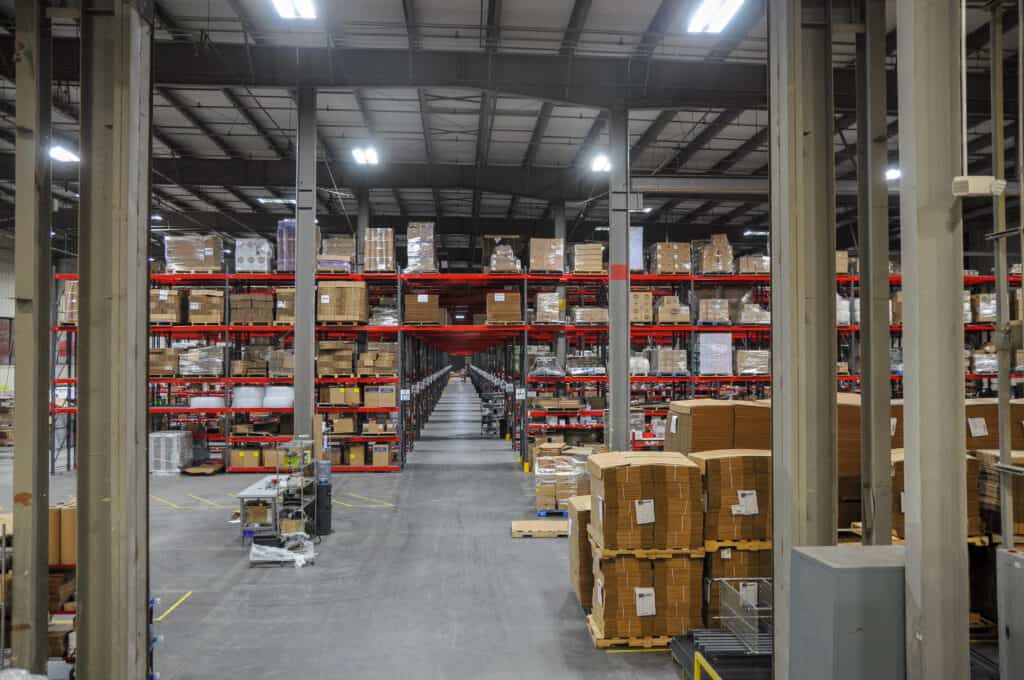
Modern warehouses in the U.S.
According to Cushman & Wakefield data, today’s average warehouse is more than 180,000 square feet, more than 40% larger than the average 20 years ago. They’re also filled with more products and filling orders more quickly than ever before. And the simple reality is that warehouse space is becoming increasingly difficult to find on U.S. soil because of COVID-19 and the resulting pendulum swings in the logistics and retail industries. That’s one big reason behind Red Stag Fulfillment adding well over 1 million additional square feet to our available warehouse storage space in the coming years.
That warehouse storage space may seem like overkill at first glance, but there’s a lot more to it than you think. More than just warehouse storage, you’ve got to account for people, equipment, office and other space, and just some room to move around. Industry estimates say you’ll want to have around 25% of space utilized for storage to prevent bottlenecks and accidents.
Usable inventory and safety stock
The first place to start when determining your warehouse storage space requirements is with your inventory. You’ll need to ensure you’re covered with enough inventory to use for projected orders and enough safety stock to buffer against delays in resupply orders.
Your usable inventory covers the goods you need on-hand to fill orders.
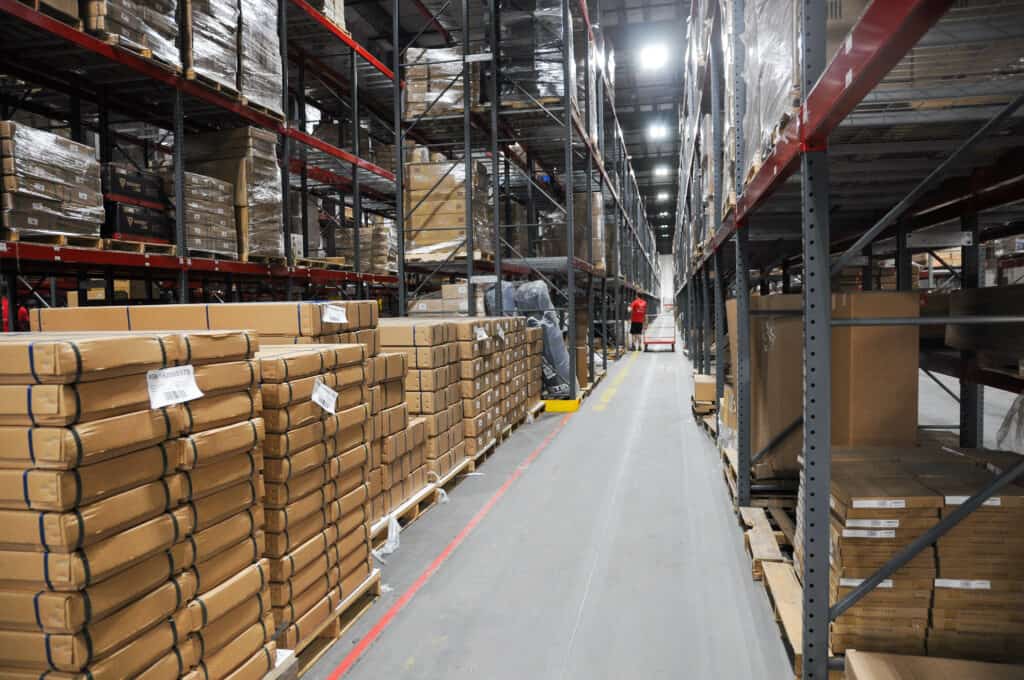
Ask yourself:
- What does it take to run my business each day?
- How many days do I go between receiving new inbound shipments?
Your usable inventory should cover that amount so that you avoid costly stockouts. From there, you’ll want a small buffer to help you avoid supply chain disruption risks. This safety stock can keep you running when the unexpected occurs.
Safety stock has become more varied since COVID-19, and there are many schools of thought on how to approach it. Our COO, Dave Carroll, provides some direct insights on safety stock in 2022 that may help your operations.
Use a long view for warehouse storage
Warehouse storage needs also have two main areas of focus: immediate and growth. Each is used to determine operational health and potential risks by giving you guardrails for expansion. Thankfully, the considerations are straightforward.
In the immediate sense, you need enough warehouse storage to hold the total inventory (usable inventory plus safety stock) you’ve calculated. There must be enough room to store all those goods once you’ve removed the space required for the people, equipment, and materials to process, pick, and pack orders. Not having the room can drive up error rates in every process while increasing the risks of harming people and products. You also lack space to grow, which is vital to eCommerce success.
Say you have room for all this month’s needs. What about next month when you grow 3%? And then, what about next holiday season when you’ll likely generate the bulk of your annual sales? If you can’t fit peak season into your warehouse storage, you create significant risks for when performance and accuracy matter most.
Right now is the time to make those forecasts and look at your warehouse storage space. There’s still time to expand or start outsourcing these operations before a ceiling becomes a limiting factor to your business.

7 significant questions to consider
If you’ve hit a warehouse storage milestone or cap, it’s time to review your warehouse and your operations. You might be ready to grow to a new location. Or realigning your warehouse space could present capital reallocation opportunities that generate more significant revenue. It’s a complex dance., There are questions to ask about customers, SKUs, and the space itself to determine if this cap is a hard stop.
1. What kinds of customers do you have?
When thinking about warehouses, it’s tempting to start with inventory, but customers and order volume are just as important, especially if COVID-19 led you to shift customer bases. For example, moving between B2B and B2C channels often changes the volume and types of goods you’ll be moving. Knowing who your customers were and who they are now — not to mention where they are — can help you keep stock and warehouse storage in focus.
A B2B audience typically buys in larger quantities and may require less utilized warehouse storage space to accommodate forklifts, carts, and other equipment. For these large-scale orders, you may be moving more crates and making freight shipments, meaning you need more space for FTL efforts. On the other hand, B2C audiences tend to buy smaller, but potentially more often. That could mean needing more pack locations while allowing for your space to include more racks. In that sense, your warehouse storage space is designed around now only how your product is stored after inbound, but how you use it during outbound.

2. Where are they?
The second consideration for your customer base is where they’re located. Are your sales distributed around the country or do they stick close to a specific region? You want to understand if you can serve them from a single location or if you need multiple. Tracking customer locations across orders is how you’ll understand needed inventory allocation, which impacts how much warehouse storage you need at any given location.
Consider working with a 3PL like Red Stag that offers multiple fulfillment locations. That way you’re never too far from customers and can reach them within the standard 2-day and 3-day shipping people want. You’ll also have backup locations in case a natural disaster leads to your goods needing to take an alternate route.
3. How have your SKUs performed in recent years?
Your audience impacts how much of each product you need based on the performance of these SKUs and where you predict future growth. It’s good to consider audience elements and SKU usage both together and separately — you may find insight into seasonality or shifting trends through these comparisons. Customers may place orders consistently, but you want to track how much the items inside those orders change.
Review SKU performance to determine where you’ve grown or seen declines. Does some inventory need to be replenished more often to protect operations? Are some goods winding down, perhaps permanently? Do you need to consider kitting or a significant sale to get rid of the last of a SKU? What will help you most? And, most importantly, is that excess inventory really safety stock or has it become outdated, slow-moving inventory that needs to be audited and thinned out?
Warehouse storage space isn’t just about growth. Often there are dynamic elements, where pulling back and holding less is the smartest play for your revenue. Don’t move capital into places that trap it.
4. What are your products’ physical needs?

Now, let’s look deeper into warehouse storage space and capacity that’s available to you. The warehouse capacity covers the amount of space a warehouse needs so it can store your goods, plus all the related equipment and staging areas to fill orders. Warehouse storage space available to you is what’s left after you remove all the space that’s required to support people, products, and processes.
Essentially, you’re taking the square footage of your warehouse and subtracting out everything that isn’t storage space. Often, it is easier to measure out or calculate the space used in non-storage applications because this is smaller and less dynamic — reconfiguring the warehouse or product layout usually doesn’t involve knocking down walls to move offices and restrooms, for instance. Subtract this amount from your total square footage to see how much floor space you can allocate to racks, pallets, and goods.
From there, calculate how much cubic space your goods take up when stacked and stored. That will give you an idea of what you can do with racking and with stacking items in their slots. You can grow vertically in many cases based on available rack configuration but be sure to leave enough room overhead to eliminate risks of hitting lights, vents, piping, security cameras, and other hanging elements. Additionally, you’ll want to consider the hazmat requirements and climate regulations of your inventory. After all, some products need to be placed with extra room in between them or cannot be stored on high shelves where temperatures tend to increase.
5. Is order-processing space growing?
Order processing can take up more space than many companies realize at first because of the different steps and handoffs in the effort. Pick, pack, and ship locations and equipment all reduce the amount of warehouse space that’s available to use for storage. Scaling means more equipment, tape, boxes, and storage for these and other elements outside of your sellable inventory.
When running your own warehouse efforts, you’ll want to consider the teams working on each. As order volume grows, the space they use can grow surprisingly. Larger teams mean more lockers and breakroom space that your original layout didn’t consider, so you must install new options or adjust warehouse space. There are also added needs for restrooms and sanitization stations, eyewash locations if you’re working with any dangerous items, and other safety equipment like fire extinguishers that need free space around them for access and signage.
Outsourcing to a 3PL removes many of these considerations and worries from your analysis. However, that doesn’t eliminate them as a business necessity — so stick with partners that are growing their physical warehouse space overall to ensure that your products and the people processing your orders are all well protected.
6. Do you accept returns?
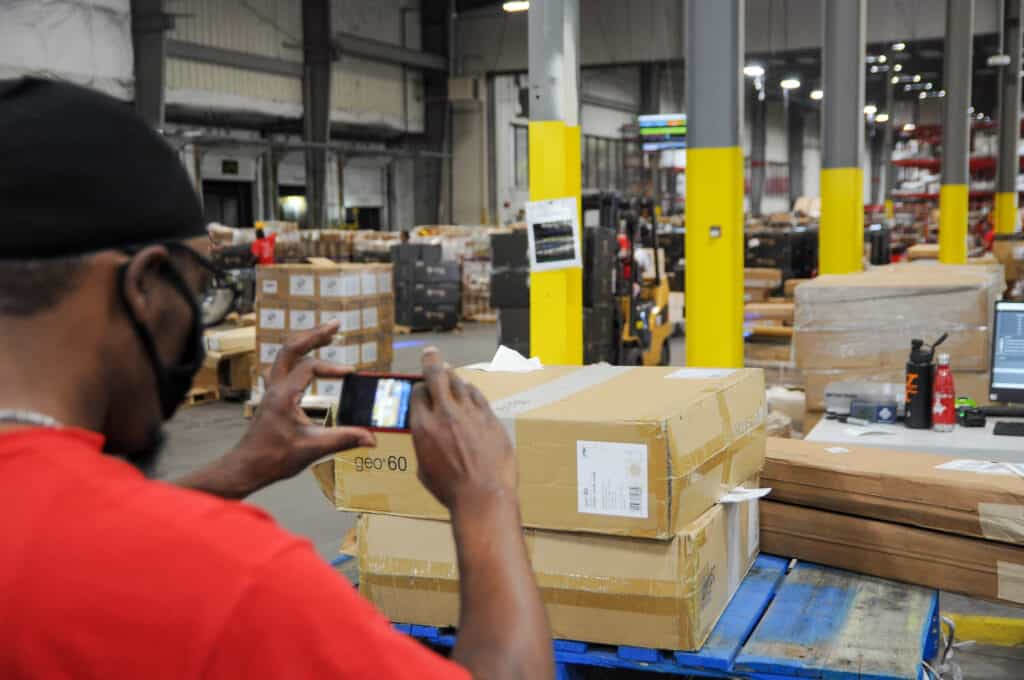
If you’re running your own warehouse storage space, then you’ll want to consider how other elements of your operations impact the space and how it’s used. One of the biggest impacts, especially after peak season, can be accepting and processing returns and refunds. If you do, your warehouse layout needs to account for the tables and space teams need to handle inbound returns, check packaging, and return goods to your inventory counts.
In some cases, returns can be handled within a standard staging area. Workstations are needed for more intense reviews, such as checking to ensure electronic components still work properly. These additions often mean you need a physically larger warehouse building to maintain the storage space within. As SKUs diversify and grow, so does the space required for returns processing. This is one reason many of your competitors may have started offering refunds while allowing customers to keep products instead of returning them.
7. When was the last time you optimized your space?
Your final consideration for warehouse storage is the layout of your warehouse and racking. Ask yourself how long it has been since you verified your space and how much your products have changed since.
We can find many ways to adapt a warehouse to better suit our needs and the products within by understanding those SKUs. Stacking and storage should be optimized based on racking and capabilities of a SKU — asking if a pallet can be stacked or if that creates a risk helps you know how to orient and construct racks and shelves to use the most vertical space. Adjusting layout to move top-sellers closer to packing stations can both speed up order fulfillment and help teams realize what goods have become slow-moving inventory and should be held at lower levels.
Turn to your WMS and similar tools. Many come with clear, useful layout options. Provide as much data as you can to get an analysis of the inventory amounts to hold and how to slot them for optimal efficiency of your labor and overall spend. 3PLs like Red Stag do this regularly to verify that goods are moving as quickly and safely as possible, enabling us to best meet our SLAs.
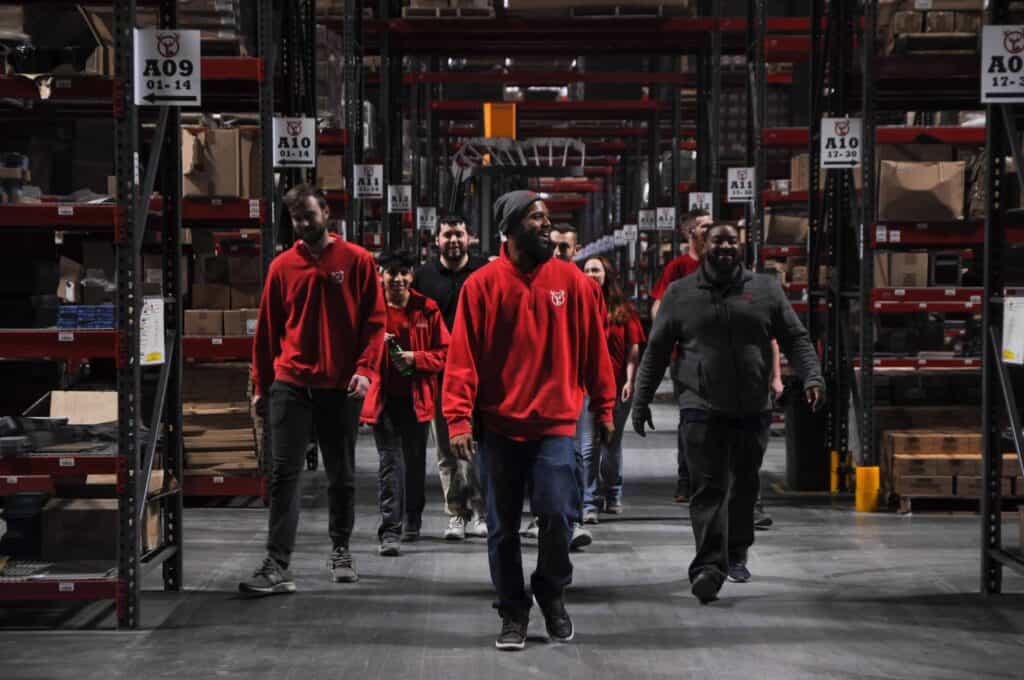
Expand faster with help from Red Stag
If those considerations leave you with more questions, or if you’re now sure that you face a capacity issue, it could be time to outsource to an expert.
Red Stag Fulfillment specializes in helping eCommerce companies grow and scale through intelligent inventory optimization and superior warehousing and logistics support. We target many of the concerns these questions raise. Expanding our facilities and physical footprint helps us offer more warehouse storage space, while having room for the equipment, people, and processes needed to support that growth. We’ve planned expansions to help meet growing consumer appetites. For you, that means access to space designed to help you maintain growth.
Do you need more capacity or can’t keep up with orders? Red Stag Fulfillment is here to help you outsource those efforts. Order management and warehouse space can shift from a concern to a competitive advantage. Let us help you achieve a more manageable operation designed to support your sales team.









